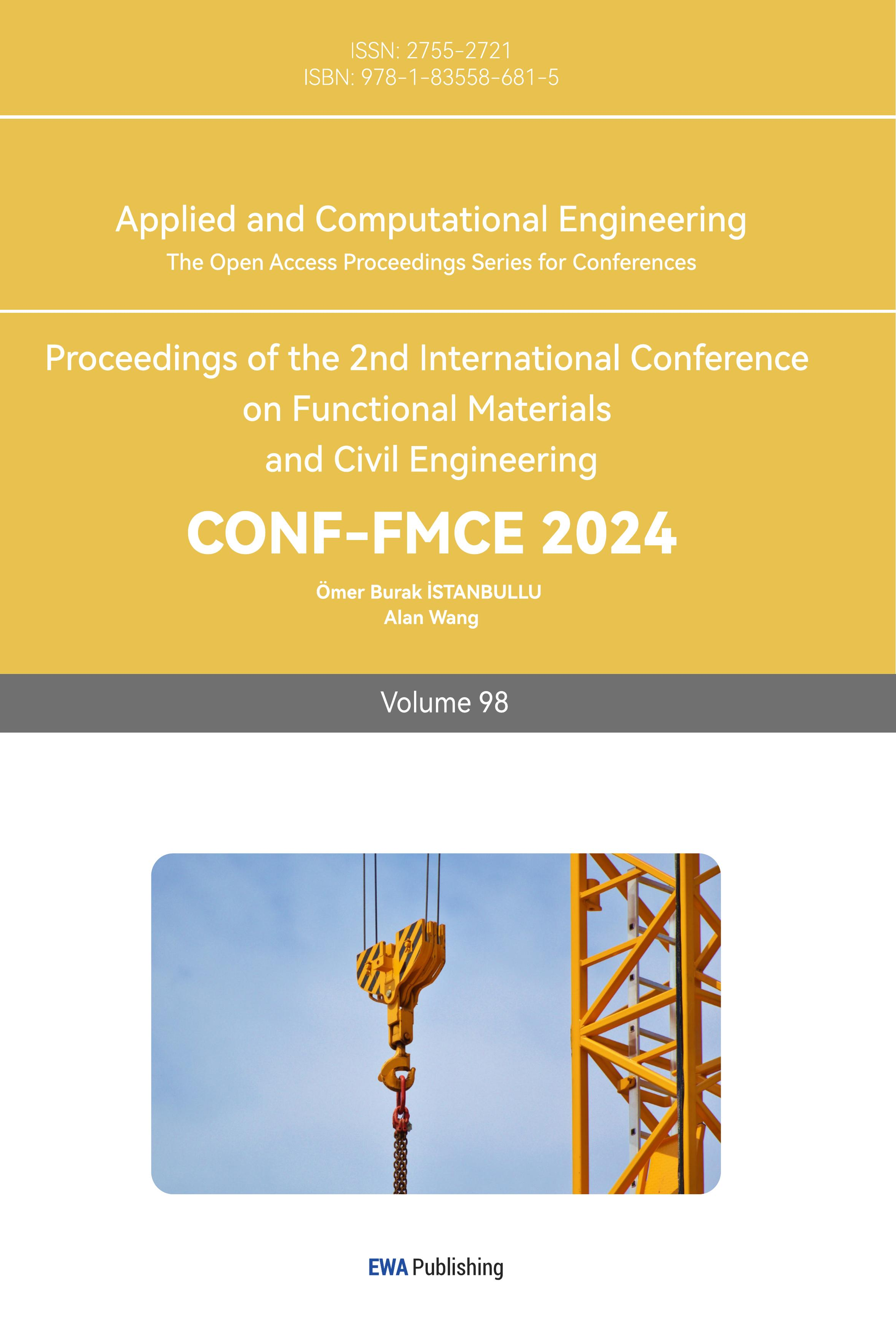1. Introduction
From the first car was invented, people are always getting new ideas of giving power to them. As the relationship between the energy of heat and the energy of work had been discovered, thermodynamics became an important factor in the development of heat engines. As researches are made, four laws of thermodynamics are given by scholars. The zeroth law of thermodynamics tells that if two bodies A and B are in thermal equilibrium with third body C, then body A and B are also in thermal equilibrium with each other [1]. As this law is the foundation law for the other three laws to exist, this law is called the zeroth law. The first law of thermodynamics says that the net change in total energy of a system is equal to the heat added to the system minus work done by the system [1]. This law can be expressed in a formula \( ∆E=Q - W \) . The second law of thermodynamics points that in all the spontaneous processes, the entropy of the universe increases. Then, the third law of thermodynamics says that the value of entropy of a completely pure crystalline substance is zero at absolute zero temperature [1]. According to these laws, the fact that no engine can have an efficiency higher than Carnot cycle, which is 100%, because of friction and errors. The first type of engine invented is steam engine, which is a type of external engine. Steam engine is defined as the machine that uses steam to covert heat into work [2]. In 1606, de Ayanz invented a machine that used steam power to propel water from mines [3]. Later in the 16th century and 17th century, Europeans are enhancing the steam engine. However, this type of external combustion engine has an extremely low efficiency while powered by steam, internal combustion heat engines are invented and used. “In the 12th century, China invented gun powder and sold to Europe. As the cannon invented by Europe used the explosion of gun powder, cannon are said to be the first heat engine [4]. Until nowadays, internal combustion engines powered by the explosion of fuel are still widely used.
In recent years, a number of researches on four-stroke engines are made. This includes the advanced version of four-stroke engines such as performance simulation of a four-stroke engine with variable stroke-length and compression ratio [5], which research on the difference on the power and the efficiency using different stroke-lengths and compression ratios, and others point out a possible factor that might help the efficiency of four-stroke engine to increase [6]. The motivation of this article is to provide the result of the researches on the application of four-stroke engines in transportation, in order to help the audience to have a further understanding of combining four-stroke engines with other type of engines so that the system of a transportation can have a higher efficiency. This article will introduce the principle of engines, four-stroke engines in specific, the most advance devices at present stage, the scenes that four-stroke engines are used, the use results of these four-stroke engines and the limitation and prospects for the future developments of four-stroke engine.
2. Descriptions of engines
Heat engines are defined as machines that converts heat to work. In most of the heat engines, a heat source is involved. For example, using a hot steam or burning fuel could be used for supplying heat to the system. In heat engines, the heat source causes an expansion inside the cylinder, and a compression will happen after it. The energy produced by the repetition of expansion and compression from the heat exchange is transferred to the piston then to the shaft. Heat engines can be classified into internal combustion engines and external combustion engines [7]. Fig. 1 shows the structure of an external combustion engine. An external combustion engine contains a cylinder, a piston, a flywheel, connecting rods, shafts and a heat source [8]. Fig. 2 shows the structure of an internal combustion engine. An internal combustion contains a cylinder, a piston, valves, connecting rods, shafts, flywheels, a crank and a plug [7].
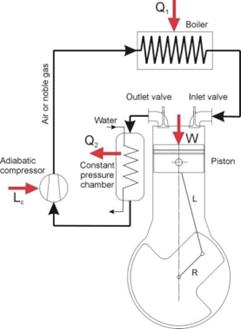
Figure 1. Diagram-of-two-stroke-external-combustion-engine [8].
The piston connected to the shaft moves inside the cylinder to provide a turning effect to the crank. The heat source causes the volume inside the cylinder to expand in order to move the piston outwards, and the decrease in the temperature cause the piston to move inwards. Four-stroke engine is a type of internal combustion engine with four strokes, which means that the piston reaches the dead-end center four times, in total to complete a cycle. Four-stroke engines generally include spark ignition and compression ignition. The difference in the ignition methods is related to the ignition point of the fuel the engine used. In four-stroke engines, gasoline and diesel fuels are used.
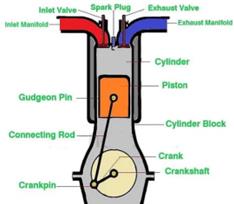
Figure 2. Parts of External Combustion Engine [7].
3. Principle of four-stroke engines
In this study, the topic is mainly focused on four-stroke engines in heat engines. In four-stroke engines, the piston reaches the top dead center (TDC) and the bottom dead center (BDC) two times each in a cycle [8]. A cycle includes the taking in of gas, the compression, the ignition, the expansion and the exhaustion of gas. Four-stroke engines can be mainly classified as spark ignition and compression ignition. This can also be distinguished by the type of fuel used. Gasoline engine is using spark ignition and diesel engine is using compression ignition. As gasoline has a higher ignition point than diesel, only gas is intake and compressed by the diesel engine while a mixture of gas and gasoline is intake, compressed and lighted in gasoline engine. As this procedure is transformed into a pressure volume diagram, these two types of engines complete two cycles, i.e., Otto cycle and Diesel cycle. According to the integral work formula, \( w=pdv \) , which w represents work done, p represents pressure, v represents volume, the work done by the cycle can be calculated using the area surrounded by the graph. By making the graph and calculating, the result can show that a positive work is produced from both of the cycle. However, the processes are not entirely the same.
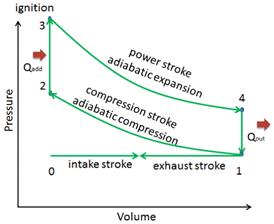
Figure 3. Otto Cycle: Processes [9].
Seen from Fig. 3, the cycle a gasoline engine experiences can be approximate to an Otto cycle by ignoring the in-taking and exhausting. In Otto cycle, the engine experiences the processes of isentropic compression, heat addition at constant volume, isentropic expansion and Heat rejection at constant volume [9]. During isentropic progresses, no heat is involved, and during isochoric progresses, the volume stays constant. Seen from Fig. 4, the cycle a diesel engine experiences can be approximate to an Diesel cycle by ignoring the in-taking and exhausting. In Diesel cycle, the processes are similar to the Otto cycle. However, diesel engine goes through Heat rejection at constant pressure, instead of an Heat rejection at constant volume [10]. Diesel engines are commonly considered a machine with higher thermal efficiency than gasoline engines [11]. Although when using the same ignition volume, gasoline engines give out more work as it has a bigger area on the graph, it is not fair to compare the thermal efficiency without comparing the compression ratio. Compression ratio is the efficiency of compressing air [12]. This means that as the fuel is ignited, the higher the compression ratio there is, the more powerful the ignition is with the same amount of fuel and gas. As diesel engines have a higher compression ratio, they can provide a larger torque to the shaft. In that way, diesel engines have a higher thermal efficiency.
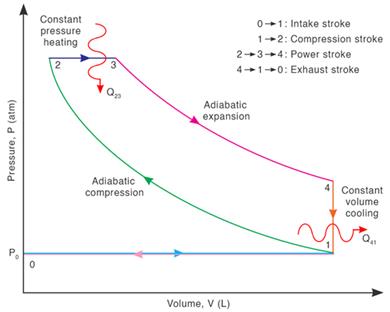
Figure 4. Diesel cycle PV diagram [10].
4. State-of-art facilities
In recent years, gasoline engines and diesel engines are the most widely used four-stroke engines. The Fig. 5 shows the structure of a gasoline engine. The gasoline engine is made up of spark plug, manifolds, valves, piston, cylinder, piston rings, connecting rods, crank and shafts [13]. The gas mixture flows inside the manifolds. The valves open and close to control the flow. The piston moves inside the cylinder to move the connecting rods and shafts. The Fig. 6 is the structure of a diesel engine. The only difference between the structure of gasoline engine and diesel engine is the method of ignition. In that way, diesel engine has a fuel injector instead of a spark plug. Most of the modern four-stroke engines using gasoline or diesel are combining a number of these products together in order to get a larger power and torque from the engine as they turn the shaft in the same direction. As developing, the rate of opening valves is controlled precisely using belts or gears with the rotating speed of the shaft to increase the thermal efficiency. Fig. 7 is an example of a gasoline engine. It has four cylinders in total. This engine can reach the maximum torque of 150/4000 N.M/Rpm and has a displacement of 1.590L [14].
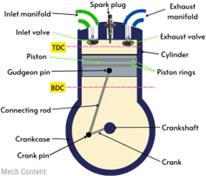
Figure 5. Four-stroke petrol engine [13].
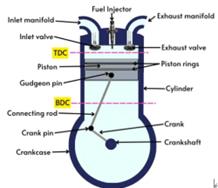
Figure 6. Four-stroke diesel engine [13]
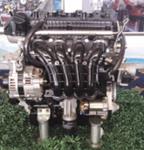
Figure 7. Four Strokes 6000rpm Car Engine [14].
5. Applications
Transportation can be sorted into three sections, which are road transportation, aviation and marine transportation. Road transportation is the vehicles on land, aviation is the vehicles in the air, and marine transportation is the vehicles that contact with water. Vehicles on land are made up of private cars, special vehicles and railways. Railways and special vehicles require high power and efficiency, so they mostly use diesel engine. However, some trains starts to use hybrid engine to save the cost of fuel, and “some tanks add gas turbine to the engine in order to advance the property [15]. The most commonly used vehicles would be private cars. Private cars that burns fuel mainly use gasoline engine as it needs a smaller size [16]. Private cars include sedans, motorbikes, bicycles, etc. Among these powered vehicles, some use hybrid engines and some use IC engines. The research from Dwyer M., the cars that use internal combustion occupy a large proportion of the total cars sold continuously from 2014 to 2023 shown in Fig. 8 [17]. The lowest percentage of the internal combustion still has 84 percent of the total. In an article written by Moyer M. says that almost all the car manufacturers are investing more money to increase the efficiency of four-stroke engines [18]. Therefore, four-stroke engine has an irreplaceable role in road transportation.
Nowadays, as technologies are developing, jet engines are becoming popular increasingly in aviation, and planes with turbine engines are replacing the planes using four-stroke engines in the past. Four-stroke engines are largely used in aircraft that uses a propeller, including some helicopters [19]. In the past, as planes have been just invented, a large number of planes use four-stroke engines. In modern time, still only the planes with propellers use four-stroke engines. The four-stroke turns heat to work by the form of rotation, and this rotation gives to the propeller provides a thrust to the plane, which is also called the propulsion [20]. However, as new types of engines (e.g., reciprocation engines, turbine engines, in-line engines, rotary engines, opposed-piston engines, radial engines and electric engines [19]) are invented, less four-stroke engines are being applied to aviation. Marine transportation can be divided into ships above water and submarines under water. As submarines generally use steam engines, which is a type of external combustion engine (EC engine), only ships and boats are using internal combustion engines. Similar to aviation the engines provide power to the propellers of the ships. In ships, basically two types of engines are used. They are two-stroke engines and four-stroke engines.
The Fig. 9 a two-stroke engine [21] and the Fig. 10 is a four-stroke engine [22]. Because of the difference in structure, they have different advantages while applying to ships. For two-stroke engines, they have a large range of fuel selection, they can be started and reversed easily, they do not need extra reduction attachments such as reduction gear, and they are easier to maintain because of their simple structure. However, four-stroke engines have higher power and efficiency while moving for a long period of time [23]. In that way, people combine these two types of engines to have a higher efficiency while starting, reversing and moving constantly on water.

Figure 8. Electric vehicles and hybrids surpass 16% of total 2023 U.S. light-duty vehicle sales [17].

Figure 9. A Very Basic 2 Stroke Engine [21].

Figure 10. 4 stroke engine parts [22]
6. Limitations and prospects
While the requirements on the efficiency of transportation increases, improved heat engines with higher thermal efficiency are manufactured. In the process of transforming the energy of heat to work, the factor friction causes the waste heat to be produced [24]. It causes the energy wasted from the heat source while moving and thus decrease the thermal efficiency of the engine. The decreasing of the quality of the performance of a four-stroke engine would possibly cause by the abrasion between the piston and the cylinder, the abrasion of the gears and the belts controlling the valves, etc. as these are all reducing the air tightness inside the cylinder while burning. Moreover, the abrasion between the piston and the cylinder would also increase the friction on the movement. This makes the engine produces more waste heat than the new engines with smoother cylinder walls.
As technologies are advancing, more decisions on saving costs and increasing efficiency of IC engines are made. One change made is to use less fuel. To achieve that, more hybrid cars are used. In hybrid cars, some uses electricity and some uses hydrogen to replace part of the gasoline or the diesel. In electric hybrid cars, cars choose to use fossil fuel or electricity orderly to reach a state that cause least carbon footprint. In hydrogen cars, the battery converts hydrogen and oxygen into water to produce electricity. Both of these cars reduce the running costs caused by the fuel [25]. Another trend of developing engine is to allow computer to participate the combustion. Computers can assist the valves in the engine to open and close at the right time when the pistons reach the dead centers. This led to the torque produced increase, the efficiency higher and less emission [26]. This technology helps drivers save the cost of fuel as the engines can burn the fuel more completely. Moreover, because of the increase in torque, four-stroke engines will be able to work in machines that need high power after adding this assistance from the computer.
7. Conclusion
To sum up, four-stroke engines are widely used in land vehicles, aviation that use propellers and parts of the marine transportation nowadays because of its high power and efficiency. For road transportation, the vehicles that require high power mostly use diesel engines, and the smaller size vehicles use gasoline engines. For aviation, only the planes with propellers use four-stroke engine to provide propulsion as new types of engines are invented. For marine transportation, four-stroke engines and two-stroke engines are widely used in ships and boats. Combining these two types of engines can give a higher efficiency at starting and constant speed moving. To reach for less pollution and higher efficiency, other types of engines such as hybrid engines, hydrogen engines and gas turbines are replacing and combining with fours-stroke engine. Additionally, computer assistance on the valves will possibly be involved in the engines. The particular significance of this study lies in providing valuable analyses and gives some possible future trend of the application of four-stroke engines in transportation.
References
[1]. Atkins P 2010 The laws of thermodynamics: A very short introduction Oup Oxford
[2]. Dickinson H W 2022 A short history of the steam engine. Routledge.
[3]. Van der Kooij B J G 2015 The invention of the Steam Engine. University of Technology Delft.
[4]. Bejan A 2017 Evolution in thermodynamics Applied Physics Reviews vol 4(1) p 011305
[5]. Yamin J A A and Dado M H 2004 Performance simulation of a four-stroke engine with variable stroke-length and compression ratio Applied Energy vol 77(4) pp 447–463.
[6]. Abd Alla G H 2002 Computer simulation of a four stroke spark ignition engine Energy Conversion and Management vol 43(8) pp 1043–1061.
[7]. Waqar E 2018 Mechanical Boost | An Engineering Blog. Mechanical Boost
[8]. Tempelhagen R, Gerlach A, Benecke S, Klepatz K, Leidhold R and Rottengruber H 2021 Investigations for a Trajectory Variation to Improve the Energy Conversion for a Four-Stroke Free-Piston Engine Applied Sciences vol 11(13) p 5981
[9]. Connor N 2019 What is Otto Cycle - Otto Engine - Definition. Thermal Engineering. Retrieved from: https://www.thermal-engineering.org/what-is-otto-cycle-otto-engine-definition/
[10]. Bhuyan S 2023 Diesel Cycle: Explanation, PV Diagram, and Efficiency. Science Facts.
[11]. Noroozian A, Sadaghiani M S, Ahmadi M H and Bidi M 2017 Thermodynamic analysis and comparison of performances of air standard Atkinson, Otto, and Diesel Cycles with heat transfer considerations Heat Transfer—Asian Research vol 46(7) pp 996-1028
[12]. Sovran G, Blaser D and Blaser S 2003 A contribution to understanding automotive fuel economy and its limits SAE transactions pp 1715-1740.
[13]. Four stroke petrol engine: What is it, Construction, Working, Cycle, Applications 2020 Retrieved from: https://mechcontent.com/four-stroke-petrol-engine/
[14]. Four Strokes 6000rpm Car Engine 2024 Made-In-China.com Retrieved from: https://quanchai.en.made-in-china.com/product/DCfQzAGrjgWE/China-Four-Strokes-6000rpm-Car-Engine.html
[15]. Zaloga S J 2019 M1A2 Abrams Main Battle Tank 1993–2018. Bloomsbury Publishing.
[16]. Melo S, Baptista P and Costa Á 2014 Comparing the use of small sized electric vehicles with diesel vans on city logistics Procedia-Social and Behavioral Sciences vol 111 pp 1265-1274.
[17]. Dwyer M 2024 Electric vehicles and hybrids surpass 16% of total 2023 U.S. light-duty vehicle sales - U.S. Energy Information Administration (EIA).
[18]. Moyer M 2009 Internal-Combustion Engine. Scientific American
[19]. Yildirim E, Altuntas O, Mahir N and Karakoc T H 2017 Energy, exergy analysis, and sustainability assessment of different engine powers for helicopter engines. International Journal of Green Energy vol 14(13) pp 1093-1099.
[20]. Hall N 2015 Propeller Propulsion. Nasa.
[21]. How a 2 stroke engine works - 2T engine explained - 2 Stroke vs 4 stroke. Guide to Motorcycle Oils – WhiteDogBikes Retrieved from: https://www.whitedoglubes.com/wdlblg/how-it-works-2t/
[22]. How does a 4 stroke engine work 2015 MechStuff Retrieved from: https://mechstuff.com/how-does-a-4-stroke-engine-work/
[23]. Michelia D, Clemente S and Taccania R 2022 Energy systems on board ships. Sustainable Energy Systems on Ships: Novel Technologies for Low Carbon Shipping vol 27.
[24]. Bhuyan S 2022 Heat Engine: Definition, Efficiency, Cycle, and Diagram. Science Facts.
[25]. Riswic J 2019 What Is a Hybrid Car? Car and Driver
[26]. Noga M 2018 Five-stroke Internal Combustion Engine-yesterday, today and tomorrow IOP Conference Series: Materials Science and Engineering vol 421(4) p 042058.
Cite this article
Li,Z. (2024). Analysis of the Principle and Applications of Four-stroke Engines in Transportation. Applied and Computational Engineering,98,61-68.
Data availability
The datasets used and/or analyzed during the current study will be available from the authors upon reasonable request.
Disclaimer/Publisher's Note
The statements, opinions and data contained in all publications are solely those of the individual author(s) and contributor(s) and not of EWA Publishing and/or the editor(s). EWA Publishing and/or the editor(s) disclaim responsibility for any injury to people or property resulting from any ideas, methods, instructions or products referred to in the content.
About volume
Volume title: Proceedings of the 2nd International Conference on Functional Materials and Civil Engineering
© 2024 by the author(s). Licensee EWA Publishing, Oxford, UK. This article is an open access article distributed under the terms and
conditions of the Creative Commons Attribution (CC BY) license. Authors who
publish this series agree to the following terms:
1. Authors retain copyright and grant the series right of first publication with the work simultaneously licensed under a Creative Commons
Attribution License that allows others to share the work with an acknowledgment of the work's authorship and initial publication in this
series.
2. Authors are able to enter into separate, additional contractual arrangements for the non-exclusive distribution of the series's published
version of the work (e.g., post it to an institutional repository or publish it in a book), with an acknowledgment of its initial
publication in this series.
3. Authors are permitted and encouraged to post their work online (e.g., in institutional repositories or on their website) prior to and
during the submission process, as it can lead to productive exchanges, as well as earlier and greater citation of published work (See
Open access policy for details).
References
[1]. Atkins P 2010 The laws of thermodynamics: A very short introduction Oup Oxford
[2]. Dickinson H W 2022 A short history of the steam engine. Routledge.
[3]. Van der Kooij B J G 2015 The invention of the Steam Engine. University of Technology Delft.
[4]. Bejan A 2017 Evolution in thermodynamics Applied Physics Reviews vol 4(1) p 011305
[5]. Yamin J A A and Dado M H 2004 Performance simulation of a four-stroke engine with variable stroke-length and compression ratio Applied Energy vol 77(4) pp 447–463.
[6]. Abd Alla G H 2002 Computer simulation of a four stroke spark ignition engine Energy Conversion and Management vol 43(8) pp 1043–1061.
[7]. Waqar E 2018 Mechanical Boost | An Engineering Blog. Mechanical Boost
[8]. Tempelhagen R, Gerlach A, Benecke S, Klepatz K, Leidhold R and Rottengruber H 2021 Investigations for a Trajectory Variation to Improve the Energy Conversion for a Four-Stroke Free-Piston Engine Applied Sciences vol 11(13) p 5981
[9]. Connor N 2019 What is Otto Cycle - Otto Engine - Definition. Thermal Engineering. Retrieved from: https://www.thermal-engineering.org/what-is-otto-cycle-otto-engine-definition/
[10]. Bhuyan S 2023 Diesel Cycle: Explanation, PV Diagram, and Efficiency. Science Facts.
[11]. Noroozian A, Sadaghiani M S, Ahmadi M H and Bidi M 2017 Thermodynamic analysis and comparison of performances of air standard Atkinson, Otto, and Diesel Cycles with heat transfer considerations Heat Transfer—Asian Research vol 46(7) pp 996-1028
[12]. Sovran G, Blaser D and Blaser S 2003 A contribution to understanding automotive fuel economy and its limits SAE transactions pp 1715-1740.
[13]. Four stroke petrol engine: What is it, Construction, Working, Cycle, Applications 2020 Retrieved from: https://mechcontent.com/four-stroke-petrol-engine/
[14]. Four Strokes 6000rpm Car Engine 2024 Made-In-China.com Retrieved from: https://quanchai.en.made-in-china.com/product/DCfQzAGrjgWE/China-Four-Strokes-6000rpm-Car-Engine.html
[15]. Zaloga S J 2019 M1A2 Abrams Main Battle Tank 1993–2018. Bloomsbury Publishing.
[16]. Melo S, Baptista P and Costa Á 2014 Comparing the use of small sized electric vehicles with diesel vans on city logistics Procedia-Social and Behavioral Sciences vol 111 pp 1265-1274.
[17]. Dwyer M 2024 Electric vehicles and hybrids surpass 16% of total 2023 U.S. light-duty vehicle sales - U.S. Energy Information Administration (EIA).
[18]. Moyer M 2009 Internal-Combustion Engine. Scientific American
[19]. Yildirim E, Altuntas O, Mahir N and Karakoc T H 2017 Energy, exergy analysis, and sustainability assessment of different engine powers for helicopter engines. International Journal of Green Energy vol 14(13) pp 1093-1099.
[20]. Hall N 2015 Propeller Propulsion. Nasa.
[21]. How a 2 stroke engine works - 2T engine explained - 2 Stroke vs 4 stroke. Guide to Motorcycle Oils – WhiteDogBikes Retrieved from: https://www.whitedoglubes.com/wdlblg/how-it-works-2t/
[22]. How does a 4 stroke engine work 2015 MechStuff Retrieved from: https://mechstuff.com/how-does-a-4-stroke-engine-work/
[23]. Michelia D, Clemente S and Taccania R 2022 Energy systems on board ships. Sustainable Energy Systems on Ships: Novel Technologies for Low Carbon Shipping vol 27.
[24]. Bhuyan S 2022 Heat Engine: Definition, Efficiency, Cycle, and Diagram. Science Facts.
[25]. Riswic J 2019 What Is a Hybrid Car? Car and Driver
[26]. Noga M 2018 Five-stroke Internal Combustion Engine-yesterday, today and tomorrow IOP Conference Series: Materials Science and Engineering vol 421(4) p 042058.





